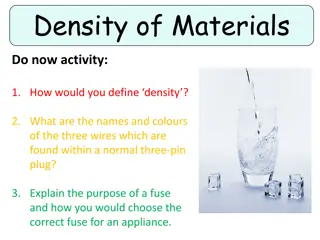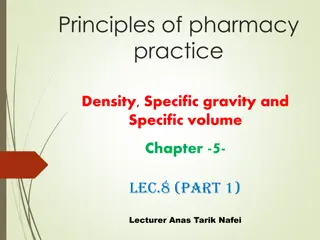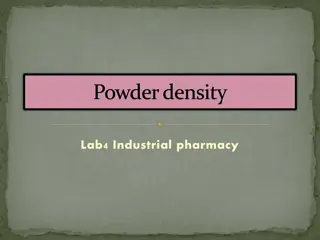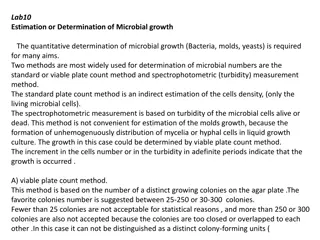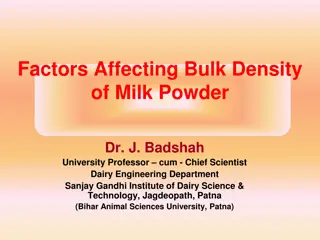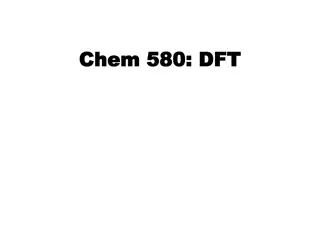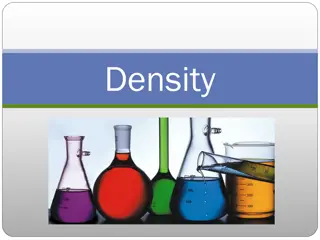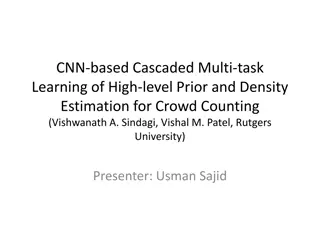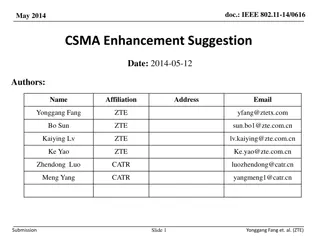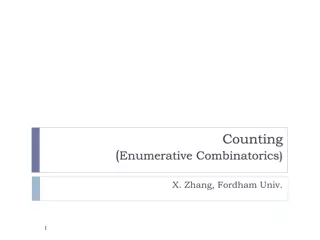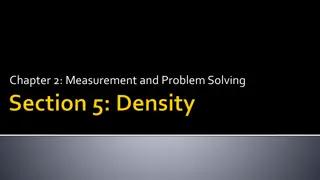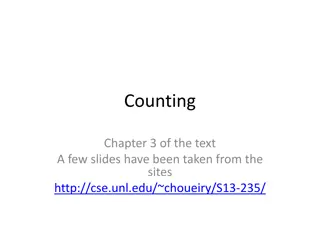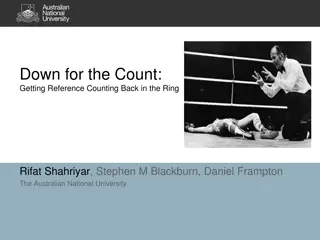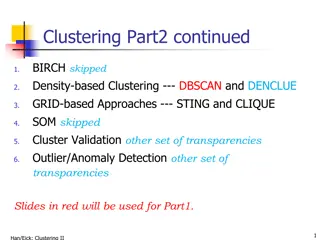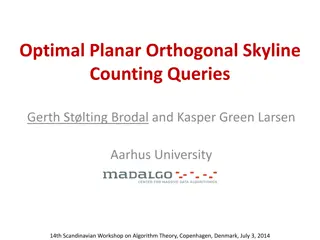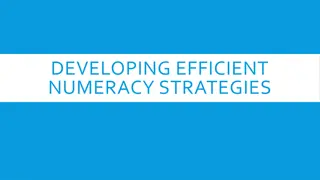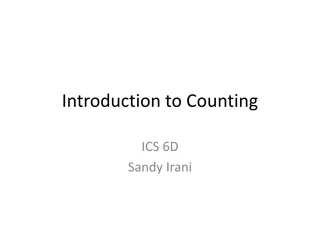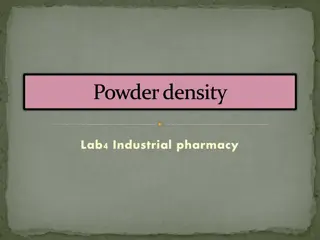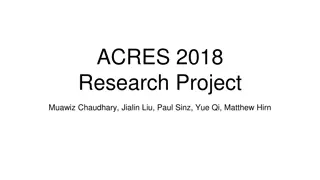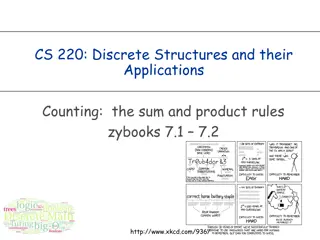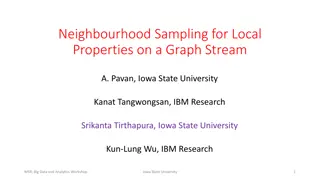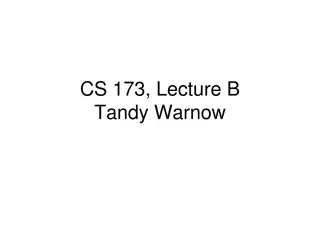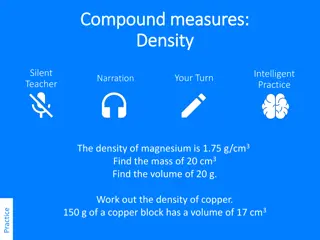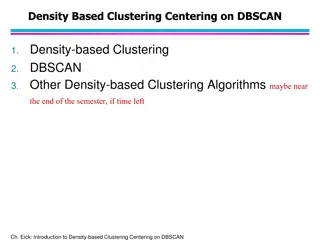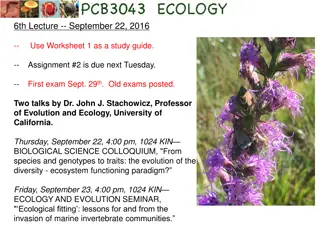Density of Materials Activity
Density is defined as the mass per unit volume of a material. In this activity, students learn to measure and calculate the density of solid objects or liquids using the density equation. They also explore the concept of density through practical examples and self-assessment tasks. Additionally, the
3 views • 16 slides
Density and Specific Gravity in Pharmacy Practice
Density and specific gravity are important concepts in pharmacy practice for measuring mass and volume relationships of substances. Density is the mass per unit volume of a substance, usually expressed in grams per cubic centimeter, while specific gravity is the ratio of the weight of a substance to
2 views • 21 slides
Counting and Number Recognition Activities
Engage in a variety of counting and number recognition activities, including identifying numbers, counting backwards, and identifying missing numbers on number tracks. These fun exercises encourage children to practice their counting skills and improve their number recognition abilities.
4 views • 13 slides
Powder Density in Industrial Pharmacy
Powder density plays a crucial role in industrial pharmacy, influencing aspects such as bulk density, tapped density, and composition of powders. The method of measuring bulk density involves pouring pre-sieved bulk drug into a graduated cylinder, while tapped density is determined by tapping the cy
4 views • 14 slides
Methods for Determination of Microbial Growth
Quantitative determination of microbial growth is crucial for various purposes, with two commonly used methods being the standard plate count and spectrophotometric measurement. The standard plate count method estimates living microbial cell density, while spectrophotometric measurement relies on tu
19 views • 6 slides
Factors Affecting Bulk Density of Milk Powder
Bulk density of milk powder, a crucial property in production, is influenced by factors like the drying method, particle shape, moisture content, and processing conditions. Roller-dried powder tends to have lower density compared to spray-dried powder due to particle shapes and voids. Factors such a
8 views • 7 slides
Sequential Counters in Digital Circuits
Sequential counters, comprised of flip-flops, are essential in digital circuits for counting clock cycles. They advance through states based on clock pulses and can measure time intervals. The circuit's output state solely depends on its present state, with transitions occurring at each clock pulse.
0 views • 22 slides
Density Functional Theory in Chemistry
Density Functional Theory (DFT) plays a crucial role in chemistry by uniquely determining molecular properties based on electron density. The Hohenberg-Kohn Theorem establishes the foundation, with the goal of finding an exact energy functional expressed in terms of density. Various concepts like th
2 views • 19 slides
Density and Physical Properties of Matter
Matter possesses physical properties that can be observed without changing its identity, including color, shape, length, mass, volume, and density. Density is the amount of mass per unit volume, where D = m/V. Objects with the same volume but different masses can have varying densities. Density can
3 views • 7 slides
CNN-based Multi-task Learning for Crowd Counting: A Novel Approach
This paper presents a novel end-to-end cascaded network of Convolutional Neural Networks (CNNs) for crowd counting, incorporating high-level prior and density estimation. The proposed model addresses the challenge of non-uniform large variations in scale and appearance of objects in crowd analysis.
19 views • 17 slides
Enhancing CSMA/CA Efficiency in High-Density WLAN Deployment
CSMA/CA mechanism in IEEE 802.11 is efficient for low-density WLAN deployment but lacks effectiveness in high-density scenarios. This submission suggests improving spectrum efficiency by shifting contention in the code domain. The aim is to address the performance and user experience in dense deploy
1 views • 14 slides
Counting Strategies and Examples in Enumerative Combinatorics
Understanding counting principles in enumerative combinatorics is essential for solving mathematical problems involving permutations and combinations. The concepts discussed include calculating probabilities, determining the number of outcomes, and applying counting rules to various scenarios such a
2 views • 69 slides
Density and Measurements in Chemistry
Learn about the concept of density, how to calculate it using mass and volume, and practical measurements in chemistry. Discover the importance of units of density, solving for volume and mass, and identifying substances based on their density. Understand how density remains constant as an intensive
4 views • 20 slides
Overview of High-Density Polyethylene (HDPE) and Low-Density Polyethylene (LDPE)
High-density polyethylene (HDPE) and low-density polyethylene (LDPE) are versatile plastics widely used for packaging and other applications. HDPE is known for its stiffness, strength, and resistance to moisture, while LDPE offers flexibility and ease of sealing. Polypropylene (PP) is another popula
3 views • 4 slides
Debate on Density and Transport Policies
Debate on the impact of higher density on public transport use, walking and cycling levels, and car trips. Arguments for and against rules requiring higher density are discussed, highlighting the complexities of achieving desired mode shares through density regulations and transit-oriented design. P
4 views • 7 slides
Monitoring Lift Passenger Traffic in EMSD HQS
Submission by Karmo International Company Limited for EMSD E&M InnoPortal focusing on monitoring lift passenger traffic in EMSD HQS. The project entails logging lift lobbies' density, suggesting passengers use less crowded lifts, and displaying lift lobby status on a web-based dashboard. Required da
1 views • 8 slides
Combinatorics and Counting in Mathematics
An exploration into combinatorics, focusing on arranging objects and counting possibilities. From dividing polygons to listing objects, delve into the world of counting and arrangement. Learn how counting plays a vital role in algorithms and probability, and discover the complexity it adds to variou
1 views • 117 slides
Reviving Reference Counting: A Comprehensive Analysis
Background garbage collection techniques like tracing and reference counting are crucial in managing memory in different settings. This article delves into the historical context, advantages, disadvantages, and challenges of reference counting in garbage collection. It presents an in-depth analysis
0 views • 35 slides
Density-Based Clustering Methods Overview
Density-based clustering methods focus on clustering based on density criteria to discover clusters of arbitrary shape while handling noise efficiently. Major features include the ability to work with one scan, require density estimation parameters, and handle clusters of any shape. Notable studies
3 views • 35 slides
Advanced Techniques for Orthogonal Skyline Counting Queries
Advanced techniques for orthogonal skyline counting queries discuss optimal planar solutions, dividing and conquering for topmost point identification, efficient vertical slab counting, succinct data structures for prefix sums and range maxima, upper bounds on degree and multi-slab queries, as well
3 views • 11 slides
Developing Efficient Numeracy Strategies for Students
Students employ diverse methods to solve number problems, from basic counting to advanced arithmetic strategies. An early numeracy project, "Count Me In Too," outlined a learning framework describing the progression of students' strategies. The Emergent Counting Stage focuses on basic number skills,
0 views • 20 slides
Introduction to Counting Techniques in Mathematics
Explore the concept of counting in mathematics using techniques like the Product Rule and Sum Rule. Learn how to calculate the number of possible choices and selections in different scenarios, such as lunch specials, student council selections, exercise schedules, and counting strings. Understand th
3 views • 15 slides
Powder Density and Bulk Density in Industrial Pharmacy
Powder density and bulk density are crucial concepts in industrial pharmacy for measuring the amount of powder in a specified volume. Powder composition, including particles and voids, affects density measurements. Tapped density involves consolidation of powder through tapping, while measuring bulk
1 views • 13 slides
Fluid Mechanics Experiment: Water Mass and Density Analysis
Discover the fundamental principles of fluid mechanics through an experiment analyzing the mass and density of water. Learn how to measure volume, calculate mass density, and explore the concept of density as a characteristic property of water. The experiment involves using equipment such as a gradu
2 views • 9 slides
Hemacytometer Cell Counting Procedure
The hemacytometer cell counting method is a valuable diagnostic tool for determining the number of cells in a given volume of fluid. This process involves using a counting chamber under a microscope to calculate the cells per unit volume. By following a systematic approach, including proper dilution
3 views • 12 slides
Advancements in Machine Learning for Electron Density Prediction
Electron density is crucial for understanding atomic bonding. This research project explores using machine learning, specifically a Unet architecture, to predict electron density in a Lithium-Oxygen-Lithium system. The data set was generated by varying the positions of Lithium atoms and calculating
1 views • 8 slides
Fundamentals of Counting Principles in Mathematics
In this lecture, we delve into basic rules for counting, including the sum rule, product rule, generalized product rule, permutations, combinations, binomial coefficients, and combinatorial proofs. We also explore the inclusion-exclusion principle with practical examples such as determining total en
2 views • 51 slides
Counting Principles in Discrete Structures
Counting serves a crucial role in algorithm design and complexity analysis, enabling us to determine program time and space complexities. This article explores counting principles such as the sum and product rules, Cartesian products, and their applications in solving simple and complex counting pro
3 views • 33 slides
Neighbourhood Sampling for Local Properties on Graph Streams
The research explores neighbourhood sampling for local properties on graph streams, focusing on counting subgraphs within 1-neighbourhood of a vertex. It addresses the Triangle Counting Problem and explains the significance of counting triangles in various contexts such as social network analysis an
1 views • 29 slides
Combinatorial Counting and Algorithm Design Concepts
Today's lecture covers the basics of combinatorial counting and its applications in algorithm analysis. Topics include exhaustive search strategies, determining graph properties, and various counting techniques. Techniques such as counting objects and generating subsets are discussed, along with alg
3 views • 20 slides
Compound measures: Compound measures: Density Density
In this study material, you will learn how to apply the concept of density in real-life scenarios. The content covers topics such as calculating mass and volume, determining density of materials like magnesium and gold, and solving related problems. Engage with worked examples and practice questions
1 views • 10 slides
Density-based Clustering: DBSCAN and Density Estimation
Density-based clustering algorithms like DBSCAN utilize density-estimation techniques to identify clusters based on data density. Density estimation involves constructing estimates of underlying probability density functions using various approaches such as non-parametric methods like Kernel density
3 views • 25 slides
Density-Dependent Growth in Coryphopterus Glaucofraenum Study
This study explores the impact of density on Coryphopterus glaucofraenum, a transparent goby species. The research investigates whether density affects the fish's growth and survival rates, focusing on supply-side population dynamics. By examining how local density influences per-capita growth rates
2 views • 33 slides
Unveiling a Planet's Density with Destiny Density
Uncover the secrets of planetary density in this NSF-funded study on Teaching with Investigation and Design in Science. Grant #2013338 delves into the correlation between a planet's cover and its density through Destiny Density exploration.
0 views • 36 slides
Cell Volume Density Analysis Procedure
This content outlines a step-by-step process for analyzing cell volume density using transparency sheets, healthy blood images, and calculations based on hit counts. The procedure involves counting cells under crosses, recording data, and calculating volume density for red and white blood cells. Exa
2 views • 5 slides
Rules and Examples for Counting in Combinatorics
Explore basic counting rules including the sum rule, product rule, permutations, combinations, binomial coefficients, and the inclusion-exclusion principle. Learn how to calculate the number of elements in sets and understand the Cartesian product of sets. Dive into examples of counting strings and
2 views • 51 slides
Counting Methods in Combinatorics
Explore various counting methods in combinatorics such as permutations, combinations, and the counting rule. Learn how to calculate probabilities and arrangements when ordering matters or repetition is allowed. Dive into the concept of permutation with replacement and tackle exercises to deepen your
2 views • 30 slides
Density: Properties, Measurement, and Determination
Learn about density, a fundamental physical property of matter, including its definition, measurement methods, temperature effects, specific gravity, and gas density. Explore how density is determined for liquids and gases, and the significance of pycnometer and Westphal balance in density measureme
4 views • 18 slides
Understanding Non-Parametric Density Functions and Kernel Density Estimation
Explore non-parametric density functions, influence functions, notations, and the key idea behind kernel density estimation. Learn about Gaussian kernel density functions, kNN-based density functions, and how to plot density functions for analysis.
1 views • 8 slides
Bijection Rule and Counting Subsets in Discrete Structures
Explore the bijection rule in discrete structures, counting subsets, functions, and the k-to-1 correspondence. Understand the concept of bijections between sets and how they relate to counting different subsets. Learn about injective, surjective, and bijective functions and their applications in set
0 views • 11 slides
